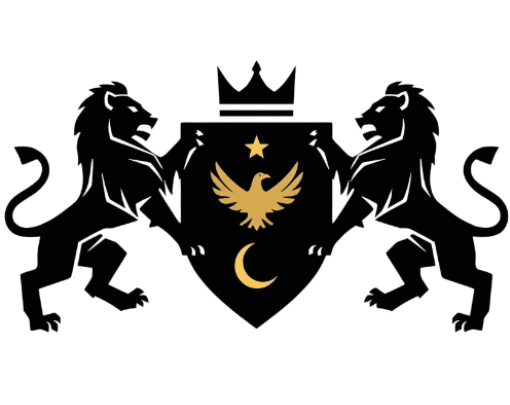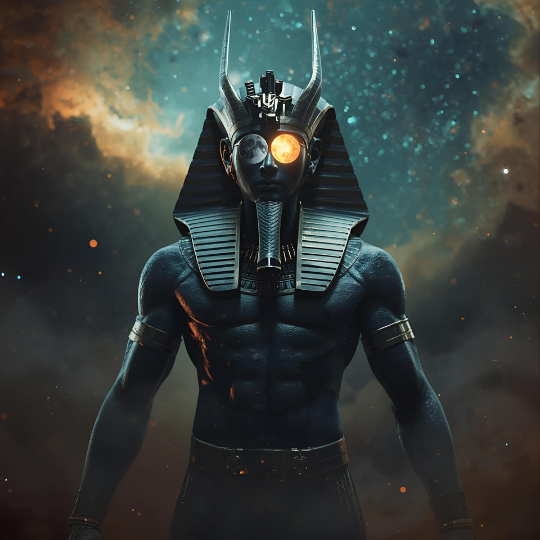Introduction: The Mystical Significance of the Eyes of Ra in Ancient Egyptian Astronomy
In ancient Egyptian spiritual traditions, the sun and moon held a special place, revered not only as powerful celestial bodies but also as the eyes of Ra, the mighty sun god. The sun, representing Ra's right eye, and the moon, his left eye, were considered sacred, embodying wisdom, intuition, and cosmic order. This concept goes beyond myth and lies deep in African fractal mathematics and visual geometric astronomy. Understanding why the Egyptians saw the sun and moon as divine eyes offers us a window into their ancient knowledge of planetary movements and cosmic harmony, revealing the multiple meanings behind this belief. Let's explore how this concept is based on precise geometric and astronomical observations and what it teaches us about the profound cosmic wisdom of the Nile Valley civilization of ancient Egypt.
The Sun and the Moon: The Eyes of Ra in Egyptian Cosmology
In Egyptian mythology, Ra, the sun god and central figure of Egyptian religion, was often depicted with two eyes. His right eye symbolized the sun, associated with warmth, life, and power, while his left eye was linked to the moon, symbolizing intuition, mystery, and balance. The Egyptians believed that these two celestial eyes of Ra maintained cosmic order, encompassing both the visible and invisible realms.
This symbolic association was not solely mythological; it was deeply rooted in the astronomical knowledge of the time. Egyptian astronomers and priests meticulously observed the skies, understanding that celestial bodies influenced the natural world, from the tides and seasons to human emotions. The sun and moon, with their regular cycles and visible phases, were seen as guides, illuminating the presence and will of Ra in the heavens.
Fractal Mathematics and Geometric Patterns: The Revelation of the Celestial Eyes
A fascinating aspect of this belief is the geometric explanation behind it. Using fractal mathematics and visual geometric astronomy, the Egyptians identified unique, eye-like patterns created by the moon's movement around the sun when viewed from Earth. These patterns, traced through thousands of repeated calculations, mimic the appearance of an eye, complete with a "pupil" and an "iris."
This phenomenon can be recreated today using computer simulations that use rectangular coordinate systems to track the moon's orbit around the sun from a geocentric (Earth-centered) perspective. By tracing the paths of these two celestial bodies over thousands of iterations, a distinct eye shape emerges, illustrating why the ancient Egyptians called them the "eyes of Ra." This remarkable symmetry and resemblance were not accidental, but rather an observation of how the movements of the sun and moon reveal an "iris" and a "pupil" through specific geometric paths.
Simulation of the motion of the Moon around the Sun in a geocentric frame of reference
The Unique Patterns of the Sun and Moon
To understand why the Egyptians referred to only the sun and moon as the eyes of Ra, it is essential to examine the patterns formed by other planetary bodies. When we observe the movement of other planets around the sun, such as Mars, Venus, or Saturn, they create distinct patterns that, while beautiful and complex, do not resemble an eye.
For example, if we trace the paths of Mars and Venus, the resulting shape is striking but forms a star or lattice pattern rather than an iris. Similarly, Saturn's motion relative to the sun produces a pattern reminiscent of a corona, but not an eye. These varied patterns underscore the uniqueness of the sun-moon combination, which alone generates a geometric structure resembling a human eye.
Through this sophisticated observation, ancient Egyptian astronomers demonstrated an advanced understanding of the cosmos, recognizing that only the sun and moon shared this eye-like symmetry. This geometric feature supported their view of these two bodies as the eyes of Ra, watching over creation and maintaining balance.
Iteration and Fractals in Ancient Egyptian Astronomy
The Egyptians' use of mathematics similar to fractals in their astronomical calculations was revolutionary. Fractals, which involve repeating patterns at different scales, are a concept often associated with modern mathematics. Yet the Egyptians intuitively applied this principle to astronomical phenomena, revealing their profound knowledge of mathematics and nature.
By repeating the calculation of the moon's motion around the sun over many thousands of cycles, ancient astronomers could visualize the structure of the celestial “eye” becoming defined and refined with each cycle. This repeating, layered pattern—which we now recognize as fractal geometry—created the impression of an iris surrounding a central pupil, much like a human eye.
The Egyptians' ability to capture this in symbolic and mathematical terms is a testament to their wisdom and creativity, demonstrating how they harmonised spirituality with mathematical precision. These fractal patterns were not mere calculations; they were an expression of a deep connection with the cosmic order.
The Spiritual and Cosmic Meaning of the Eyes of Ra
For the Egyptians, the eyes of Ra were more than symbols; they were divine entities actively influencing the physical and spiritual worlds. The right eye (the sun) represented strength, action, and the visible, while the left eye (the moon) embodied intuition, mystery, and the invisible. Together, they complemented each other, maintaining Ma'at, the concept of cosmic harmony, truth, and justice, which was central to Egyptian belief.
This cosmic duality also reflects a broader understanding of balance in the universe, where light and dark, the known and the unknown, masculine and feminine energies coexist and complement each other. Thus, the eyes of Ra symbolize not only observation, but also active participation in the cycle of creation, preservation, and renewal that governed the human and divine realms.
Conclusion: The Enduring Wisdom of the Eyes of Ra
The ancient Egyptian view of the sun and moon as the eyes of Ra offers us a profound understanding of their cosmology, revealing how they perceived the universe as an interconnected web of visible and invisible forces. Through fractal mathematics and celestial observations, they discovered patterns that resonated with spiritual and natural truths. The unique eye-like pattern traced by the movements of the sun and moon illustrated the balance they sought to embody in their lives, aligning with the watchful gaze of Ra to guide them.
Reflecting on this wisdom, we can appreciate the advanced knowledge and spiritual insight possessed by the Egyptians. They saw themselves as part of a greater cosmic order, constantly seeking balance, harmony, and understanding the rhythms of the universe. For those interested in the spiritual significance of celestial bodies, the concept of the Eyes of Ra offers a valuable reminder of our connection to the stars and the timeless quest for unity between heaven and Earth.

